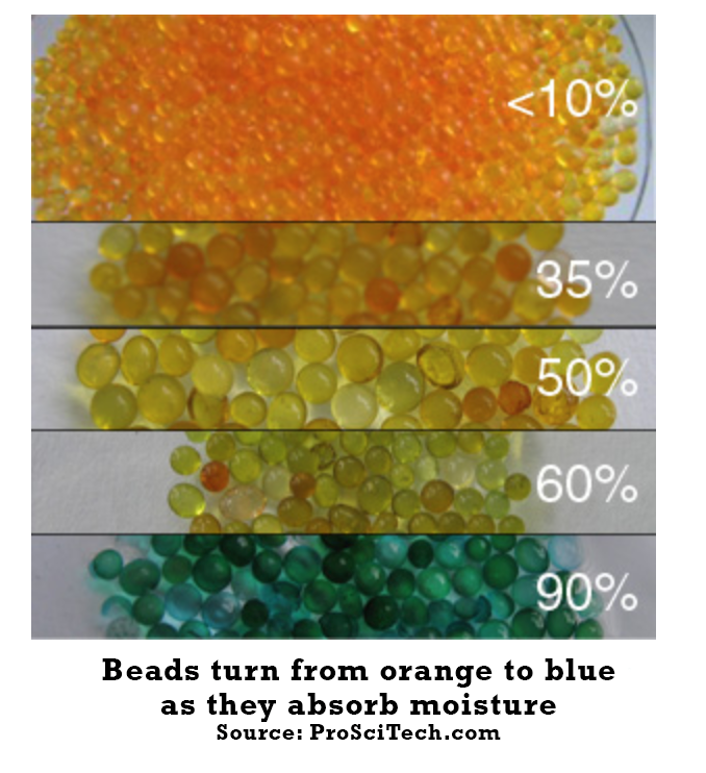This page may contain affiliate links. As an Amazon Associate I earn from qualifying purchases.
How to Store Your 3D Printing Filament
Introduction
Whether you are a pro making critical machine parts or a hobbyist creating bobblehead dolls and fun items for friends, read on for some helpful tips and links, which will save you time, money and a whole load of frustration that can come if you don’t store your filament correctly.
Here I’ll look at some simple and generally eco-friendly solutions to protect your 3D printing filament materials from physical and environmental damage.
Keeping your filament dry is one of the main challenges of flawless 3D printing, so I’ll show you some quick and easy ways to protect your filament from moisture, as well as some pro-level solutions.
So why do I need to store my filament a certain way?
FILAMENT LOVES MOISTURE!
Correctly storing your filament is the backbone of producing flawless 3D prints. Filament, just like me, loves all the things that are bad for it!
Left in the wrong environment, filament will soak up all the moisture in the air around it, and you won’t notice until it’s too late. Damp filament will perform poorly if at all, and this will push up your costs as you have to scrap prints and can lead to complete print failure.
Filament and Moisture
When moisture invades your filament, not only does it mean you require more heat in the printing process, but that the structure is also weakened as it heats. The technical term is that the filament is ‘hygroscopic’ which means that it absorbs moisture from the air.
You can’t tell if your filament has absorbed water by any way other than printing with it.
You will know when the filament is wet as it makes a popping, crackling sound in the extruder as the moisture boils. The difference in the texture of your print is highly noticeable, giving an inconsistent rough finish, see figure below:

Not all filament is equal, a few types are unaffected by moisture and dust, but common ones such as PLA and ABS need more care, while Nylon is highly hygroscopic and must be stored away as soon as you have finished using it. So, it’s better safe than sorry and implement a good housekeeping rule for all your filaments.
It’s not just the print quality that will suffer, but damage can occur to your printer, and your time would be spent cleaning blocked nozzles from dust and damp material blockages.
It’s always worth taking a peek at the manufacturer’s information on the filament you are using, new materials are made available all the time, but to date, I haven’t found any materials that can just be left hanging around in the open without adverse effects.
Below is a graphical, up close, representation of an awful print from a damp and dusty filament, sometimes you wouldn’t even see layers at all, just a great big mass of spaghetti!
10 hours and upwards into a print, you’re all excited to see the finished article, not long now, when you hear it, the sizzle and pop… and your eyes are drawn to a holy mess unfolding like a plate of noodles! Is it the printer, is it my settings? No, it’s moisture in your filament!

So, if the result above looks familiar, read on to find out some simple ways, you can avoid the issues of humidity and physical damage that have been tried and tested by everyday 3D printer users.
Filament is Thirsty!
You may think your room is dry, but the reality is even the smallest amount of moisture in the air will be attracted to 3D printer filament.
Unraveling
Poorly stored filament not only absorbs water, but it will also unravel itself from the spool. If you don’t clip the loose end of the filament securely, it will quickly start to unravel and form into knots and tangles.
If your filament does unravel, you can rewind it on to the spool, but there is a higher chance of it getting tangled the next time you use it. Tangles on the reel can cause the filament to get stuck entirely during your print – a complete disaster!
Properly storing your filament will go a long way towards preventing tangles and unraveling filament.
So, now we know all the problems of not storing your filament properly; it’s time to look at some solutions!
Ziplock! A Quick Simple Solution
A Ziplock bag and some silica gel packets, pop your filament into one of these with a silica gel sachet and it will stay dry while you prepare a more permanent solution.
Those packets of gel you find in handbags and shoes will do for now, but don’t plan on using them too long, they won’t last, and you can’t tell how much moisture they have already absorbed.
To save you time I’ve added links here for some bags and silica gel, packs and loose gel. These are widely available; after looking at many others, these are the ones I use.
Silica Gel packs
Make sure you tuck in the filament ends or use something to cover them as they can be sharp enough o tear the bag as it shrinks around the filament, even small pieces of blu-tack will help. The main thing is not to rupture the bag as you remove the air.
Replace your silica gel packs as needed to ensure your product remains moisture-free. You can purchase silica beads that change color according to the amount of moisture they have absorbed, so you have a great indicator of how well they are performing.
If using muslin bags, you can at least reuse the bags as they are easy to open to check the gel.

https://retail.proscitech.com/products/silica-gel-2-4mm-pellets-orange?variant=28459927208020
Ziplock Bags
Most Ziplock bags are not big enough, so you need to make sure you buy the large 2-gallon bags which are the perfect size for one 1kg spool. I’ve found the genuine brand name ones with the slider to be the most robust, as the cheaper ones are more prone to tearing and opening.
Vacuum Bags
The best bags are the ones you can remove air from using a vacuum cleaner nozzle. These are usually used for storing things like bedding or clothes, but they make a great airtight solution for your filament.
Make sure you have good sturdy storage bags, ones with a good quality zip that won’t open, not the travel ones you roll to expel air from, those don’t work for this purpose.
Purchase some silica gel and muslin cloth or bags, fill the bags and pop one or two inside the vacuum bag, add your filament either in single bags or one that may hold up to 6 reels, be sure to add extra gel to take care of multiple bags. Zip the bag, checking that the zip is sturdy and nothing is broken, and then proceed to extract all the air. This can take a minute or two.
Airtight Containers
Clip Top Boxes
Sistema is a clip top box brand that is available worldwide, they are made to a very high standard and look great, the advantage here is more organized storage, all highly visible and easier to access.
The boxes can also be adapted to perform their duty while you are using the filament. With some DIY skills and the right tools, you can make holes in the box for the filament to be dispensed from a humidity-free container straight to your 3D printer.
See the full range of boxes at the link below:
https://sistemaplastics.com/products/storage/90-litre-storage-bin
You can place silica gel packs in the airtight boxes or go a step further and add a small dehumidifier, it depends on the climate where you live and how much time and money you want to put into storage solutions.
Ziploc WeatherShield Boxes
Ziploc is very similar to Sistema, with similar features such as clip locking, moisture tight seal, and stackable design. I think they look a bit more utilitarian compared to the Sistema design, which you may prefer. They come in a wider range of large sizes which make them perfect for keeping two or more spools of filament dry.
DIY Airtight Box
More elaborate DIY with airtight boxes, this lends itself to a separate conversation, but you may find this article very useful if you’d like to follow that route.
https://www.instructables.com/id/3D-Printer-Filament-Dry-Box/
3D Fuse 3D Printer Filament Box
If you’d rather buy a ready-made filament storage solution, then the two models (basic and deluxe) from 3D fuse are your best budget options.
The design is a simple Tupperware style box the perfect size for one filament spool. A smooth-running filament holder and a sealed hole to allow the filament to exit from and head to your 3D printer.
The deluxe model adds a digital hygrometer that allows you to accurately monitor the humidity level in the container so you can change your silica gel when necessary. As well as a reasonable length of PTFE tubing and some silica gel packets.
In my opinion, the deluxe model is worth the money if you don’t want the hassle of going the DIY route, while the standard model isn’t worth it as it’s basically just a Tupperware with a hole added!
Polymaker PolyBox Edition II Filament Storage Box
The PolyBox Edition II is a filament storage solution that you keep your filament in all the time, including while you are printing. This is super convenient and hassle-free as you don’t have to remove the filament every time you want to use it. It also means there’s far less chance of your filament unraveling.
A 150cm long guide tube is included, which you can cut to suit the size and position of your 3D printer. This protects your filament from the point at which it leaves the box until it reaches your printer.
A digital thermo-hygrometer is included on the box, this monitors the temperature and humidity levels inside the box, so you can be sure your filament is sat in its optimum conditions. If the Hygrometer shows the humidity levels above 15%, then it is time to refresh the silica gel.
You get four silica gel packs included, while only two are required to be used at a time. This allows you to have two packs drying in the oven.
eSun eBox 3D Printing Filament Box
No products found.
eSun are well known for their high-quality filament, so they should know a thing or two about storing filament!
The eBox is similar to the Polymaker Polybox, but it contains a built-in heater to further help keep your filament dry as well as restore filament that has taken on moisture.
Also, it features a useful weighing function that allows you to keep track of your filament usage.
Four heat settings allow you to either maintain a low level of heat just enough to prevent moisture ingress, up to a full 80C that will bake filament that would otherwise be unusable.
Conclusion
It’s easy to think that storing your filament is not that important. I certainly didn’t pay any attention to it when I first started 3D printing. It wasn’t until my first print failure that I realized moisture ingress was the root cause of my problems, and I quickly invested in some big ziplocks and silica gel packets.
Don’t wait for your first print failure and write off a whole spool of filament!
I hope this guide has answered all your questions about filament storage if it hasn’t, then, please drop me an email or message and I’ll do my best to help.
Last update on 2024-04-23 at 16:21


![wisedry 50 Gram [6PACKS] Rechargeable Silica Gel Desiccant Packets Fast Reactivate Desiccant Bags Orange to Green indicating for Air Dryer Food Grade](https://m.media-amazon.com/images/I/41nw7iwYPUL._SL160_.jpg)






